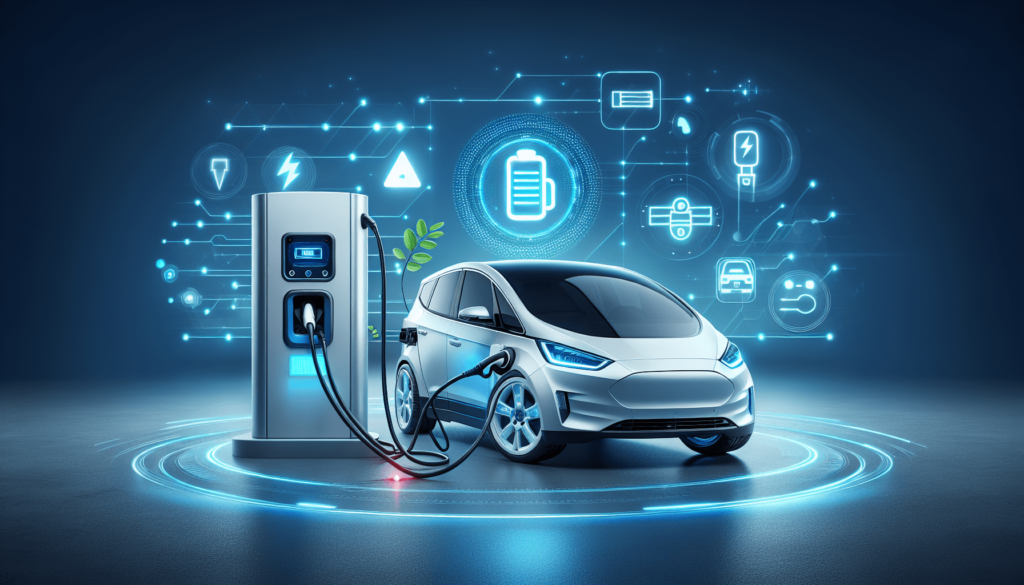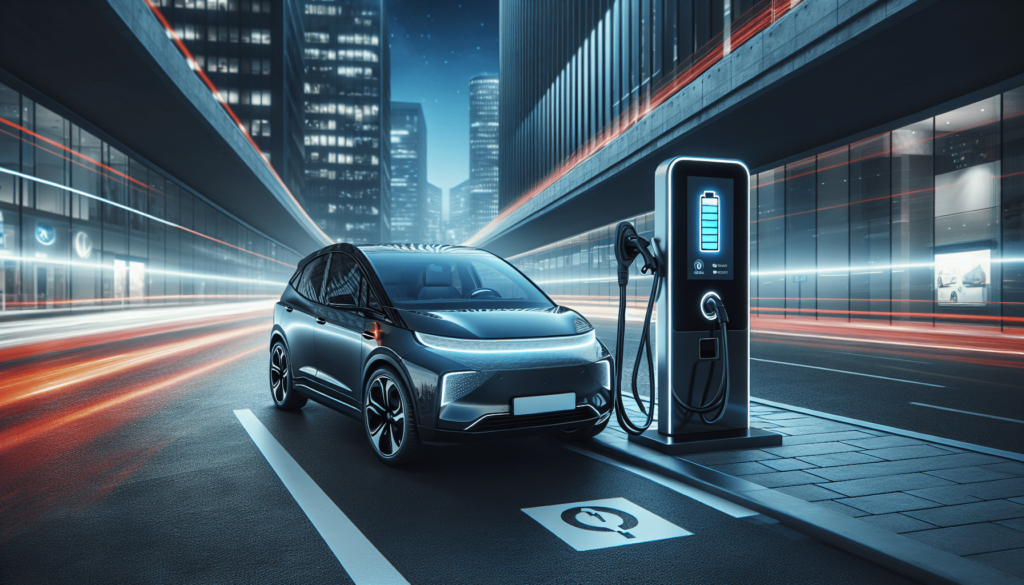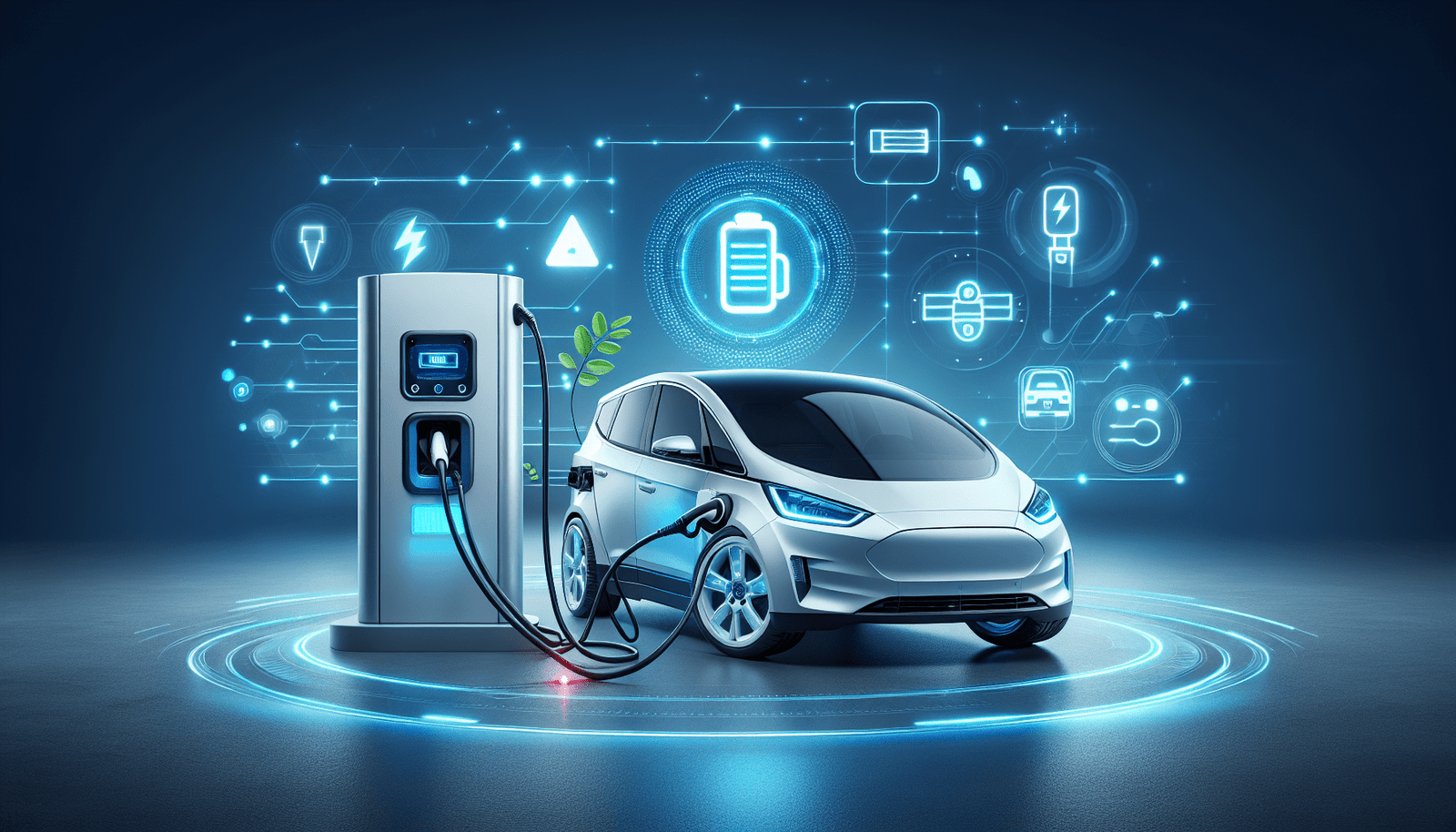You’ve probably heard the debate swirling around electric vehicle (EV) circles about whether charging your car’s battery to 100% is more of a vice than a virtue. It’s a topic that’s gained enough traction to have you second-guessing every time you plug in your ride. With the surge in EV ownership, understanding the impact of charging habits on your car’s battery health has never been more crucial. So, let’s get into whether topping off your EV’s battery could be doing more harm than good.

Understanding EV Battery Basics
When you’re diving into the world of electric vehicles (EVs), the battery isn’t just a component—it’s the heart of the vehicle. Let’s break down the nuts and bolts of what you’re driving on.
Composition and types of EV batteries
Your EV’s battery isn’t too different from what powers your smartphone, just on a much larger scale. These batteries are primarily lithium-ion (Li-ion), renowned for their high energy density and longevity. But it’s not all Li-ion on the road; other types include the nickel-metal hydride (NiMH) and lead-acid batteries, each with its own pros and cons for specific applications.
How EV batteries function
Think of your EV battery as a big energy storage unit that powers an electric motor. When you’re cruising down the highway, the battery discharges, supplying energy to move the car. Conversely, when you plug in your car to charge, you’re essentially pushing electricity back into this storage unit, readying it for your next trip.
Lifespan and degradation of EV batteries
Like all good things, EV batteries don’t last forever. Over time, they degrade, meaning they won’t hold as much charge as they used to. Factors that speed up this process include extreme temperatures, high states of charge, and, yes, the way you charge them. But don’t fret; most EV batteries are designed to last well into the life of the vehicle, often beyond a decade of use.
The Science of Charging EV Batteries
Understanding how charging works can not only demystify the process but help you optimize your charging habits.
The charging process explained
Charging your EV is a chemical reaction in reverse. When charging, you’re forcing electrons into the battery, ready to be used later. This process isn’t 100% efficient, though, so expect some energy loss in the form of heat.
Fast charging vs. regular charging
Fast charging is the express lane, pumping a lot of power into your battery in a short amount of time. It’s convenient but can be stressful on your battery. Regular charging, on the other hand, is like a leisurely stroll, taking more time but generally being gentler on your battery’s health.
Impact of charging speed on battery health
In the battle of fast vs. regular charging, your battery’s health is what’s at stake. Regularly opting for fast charging can accelerate battery degradation, shortening its overall lifespan. It’s fine for occasional use, but for your daily charge, slower is the way to go.
Myths vs. Facts: Charging to 100%
“Will charging my EV to 100% really damage the battery?” Let’s set the record straight.
Common misconceptions about battery charging
One of the most pervasive myths is that you should always charge your EV to 100%. While filling up to full capacity isn’t the sin some make it out to be, it’s not necessarily the best practice either.
Real impacts of charging to 100% on battery life
Charging to 100% can stress your battery, especially if it remains at that high state of charge for extended periods. However, the occasional charge to 100% won’t spell instant doom for your battery’s health. The truth lies somewhere in the middle.
Expert opinions on optimal charging practices
Most experts agree: Keeping your battery’s state of charge between 20% and 80% is ideal for longevity. This doesn’t mean you can never charge above 80%, but making it a habit to stay within this range can help keep your battery in top shape.
State of Charge (SoC) and Its Importance
Understanding State of Charge (SoC) can be a game-changer for maintaining your battery.
Defining State of Charge
SoC is essentially a battery’s fuel gauge, representing the current battery capacity as a percentage of its total capacity. Think of it as knowing how much “gas” you’ve got in the tank.
How SoC affects battery health
Keeping your SoC in the Goldilocks zone—not too high, not too low—helps mitigate stress on the battery, promoting a longer life. Extreme SoC levels, both high and low, are what you’re trying to avoid.
Optimal SoC windows for longevity
Aiming for an SoC window of 20%-80% during regular use is a solid guideline. This reduces the risk of undue stress on your battery, helping it last longer.

Battery Management Systems (BMS)
Your EV comes equipped with a guardian angel for its battery, known as the Battery Management System (BMS).
Role of BMS in EVs
The BMS is the brain behind the battery, monitoring its health, temperature, and charge level. It ensures everything’s operating as it should, stepping in to protect the battery when needed.
How BMS protects the battery during charging
During charging, the BMS keeps an eye on things, regulating the process to avoid overheating and overcharging. It’s your battery’s first line of defense against the factors that accelerate degradation.
Limitations of BMS in controlling charging impacts
While BMS does a stellar job, it can’t fully negate the wear and tear of regular use and the effects of charging habits. Think of it as a highly skilled coach that can’t play the game for you—it can guide and protect, but how you use and charge your EV still plays a significant role.
Real-World Implications of Charging to 100%
How does all this theory pan out in the real world?
User experiences with long-term EV use
Many EV owners have found that with mindful charging habits—avoiding regular full charges and extreme temperatures—their batteries have lasted well beyond the average lifespan, with minimal degradation.
Case studies: Battery life comparisons
Studies comparing EV batteries that were regularly charged to 100% with those kept within the 20%-80% SoC range have shown a noticeable difference in longevity, with the latter exhibiting less degradation over time.
Industry standards and recommendations
The EV industry, while still evolving, generally recommends maintaining a moderate SoC and avoiding extreme charging habits to preserve battery health.
Alternatives to Charging to 100%
So, what’s the alternative to hitting 100% every time you charge?
Charging strategies for battery health
Employing a charging strategy that targets an 80% fill can significantly impact battery health positively. It’s about finding a balance between practicality and preservation.
Adaptive charging technologies
Newer EV models come with adaptive charging technologies that allow owners to set charging limits, making it easier to avoid the 100% mark and prolong battery life.
Scheduled and smart charging features
Scheduled and smart charging features are becoming more common, letting you charge when it’s most beneficial for battery health and (bonus points) often when electricity rates are lower.
Maximizing EV Battery Life
To get the most out of your EV battery, here are some best practices to consider.
Best practices for EV battery care
Beyond smart charging habits, avoiding exposure to extreme temperatures and minimizing the use of fast charging can go a long way in extending your battery’s health.
Temperature considerations for battery charging
Extreme heat and cold can be tough on your battery. Parking in the shade or in a garage and using thermal management features when available can help mitigate temperature effects.
The role of software updates in battery management
Manufacturers are continually improving BMS functionality with software updates. Staying current with these updates can help your battery operate more efficiently and last longer.

The Future of EV Charging and Battery Technology
The horizon looks bright for EVs, with advancements in the pipeline that could change the game for battery and charging technology.
Emerging charging technologies and their potential impacts
Innovation in charging technology, including wireless charging and ultra-fast chargers with minimal degradation impact, could make charging quicker and even more convenient.
Innovations in battery composition and design
Research into alternative battery materials and designs promises not only more efficient storage solutions but also batteries that are more resilient to the stresses of charging and discharging.
How future advancements might alter charging practices
As technology advances, the sweet spot for charging to ensure battery longevity may shift. What’s more, improved battery health diagnostics could provide more personalized charging recommendations.
FAQs About EV Battery Charging
Let’s clear up some final questions you might have about charging your EV.
Is it bad to charge my EV every night?
Not necessarily, especially if you’re adhering to recommended SoC ranges and using a regular charger. What’s crucial is how you manage the state of charge over time.
How often should I charge my EV to 100%?
Limiting charges to 100% for those times when you need the maximum range is a good rule of thumb. For daily use, aiming for up to 80% is a better practice for battery health.
Can EV batteries be overcharged?
Thanks to your EV’s BMS, the risk of overcharging is minimal. The system is designed to prevent overcharging, ensuring that even if you leave your car plugged in, it won’t exceed its capacity limit.
Embracing these insights and practices can help you make the most of your EV experience, ensuring both the longevity of your vehicle and the satisfaction of your journey.

